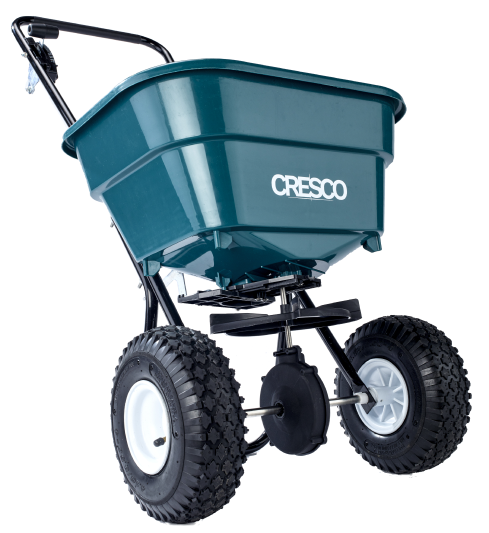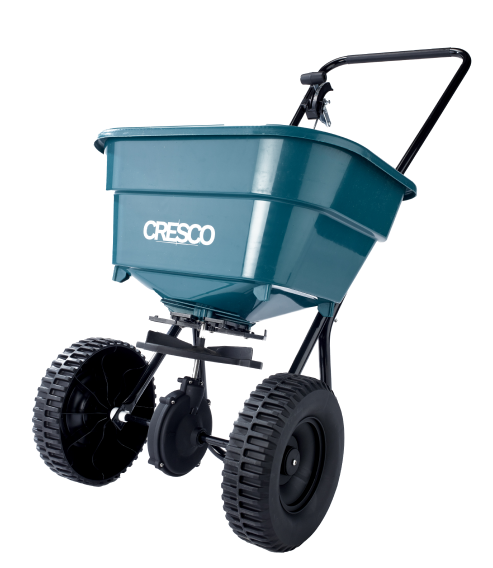Different Types of Salt Used for Spreading in Winter
Rock Salt for Winter Maintenance Salt Spreading
Halite, otherwise known as rock salt or grit salt, is basically sodium chloride, or at least a form of it. Sodium chloride is exactly the same chemical compound as table salt used to flavour food.
Rock salt grit comes from the drying of prehistoric oceans. In the UK, our rock salt is mined from three different sources, namely Cleveland, near Winsford in Cheshire, and in County Antrim, Northern Ireland.
Rock salt constitutes approximately 94% sodium chloride. It has a reddish-brown colour on account of a substance called marl. In the UK, from all salt production, some 30% is used to de-ice roads.
The brown-coloured rock salt certainly comes with a particular advantage – it’s fairly cheap. Nevertheless, there are some downsides. Rock salt:
- Can be detrimental to vegetation.
- Leaves behind a brown-coloured messy residue.
- Is not quite as effective at dissolving ice and snow as white salt.
- Can cause corrosion (particularly to vehicles and rebar used in concrete bridges).
Marine Salt for Winter Maintenance Salt Spreading
The white-coloured marine de-icing salt is particularly concentrated and very effective. Its makeup consists of 99.9% sodium chloride.
Marine de-icing salt is 100% soluble so there is no grit or impurities left after the gritting process that can block drains and become particularly messy.
Further, marine de-icing salt is kinder to our environment and it’s far more sustainable than mined rock salt.
Nowadays, for many, marine de-icing salt is the primary choice to be used in gritting equipment because:
- It’s easily spread over ice and snow.
- It rapidly dissolves and leaves behind no messy residues.
- Because there are zero messy residues, it’s the primary choice and optimal solution for areas and establishments whereby cleanliness is important, including hospitals, schools, and retail outlets.
Different Types of Winter Maintenance Equipment Available
Gritting Equipment
Push Broadcast Spreaders
The push broadcast spreader uses a rotating disc to cast salt far and wide. The rate of salt flow is easily adjusted using a lever typically located on the handle.
3It’s best to choose a pedestrian spreader that employs a stainless steel frame with enclosed gearing as there is far less likelihood of corrosion occurring. Go for pneumatic tyres rather than solid tyres as pneumatics offer improved grip in icy conditions.
The Cresco 10SW and 20SW pedestrian spreaders allow you to spread fertiliser on the lawn in spring and summer and salt on the driveway in winter thereby solving the expense and potential hassle of purchasing and maintaining two devices on account of the two-in-one function.
The Cresco 10SW is suitable for the average UK homeowner and is recommended for applications in areas between 150m² and 500m².
The Cresco 20SW is recommended for applications in areas between 500m² and 3,500m².
Towable Spreaders
This type of spreader works in a similar fashion to the push spreader with one key difference: as the name suggests, towable spreaders can be towed by a ride-on mower or a quad bike.
Vehicle-Mounted Industrial Spreaders
More suited to heavy-duty work, vehicle-mounted salt spreaders can be mounted to the rear of 4×4 vehicles and towable trailers. Generally suited to industrial and commercial use, the vehicle-mounted industrial spreader typically includes a cover to provide protection of the contents from the elements such as rain and snow.
For more information about salt-spreading equipment, please read our comprehensive guide to salt spreaders.
The Science Behind Gritting and Salt Spreading
How does salt and grit work in keeping pedestrians and drivers safe in frosty or snowy conditions?
The basics go like this: salt (grit) is highly effective at lowering the freezing point of water. This is precisely how grit helps in keeping roads, pavements, and pathways clear and safer.
When particles of salt come into contact with ice or snow, the ice or snow begins to melt in that this reaction produces water. The water when combined with salt is known as ‘brine’. Brine has the capacity to freeze at lower temperatures than regular water. As such, even when temperatures drop below freezing, brine remains a liquid.
Given some time, brine ameliorates further into the ice and snow, eventually moving down to the surface of the road, pavement, or pathway. At this point, the brine tends to spread out beneath the ice causing the bond that’s been created between the ice/snow and the road or path surface to break. The remaining ice and snow float on top of the liquid brine, and this permits footfall and vehicles to quickly break the ice and snow down into slush.
Is it possible to become too cold for salt to work effectively? Salt is particularly effective down to temperatures of -5°C. At temperatures lower than -5°C, and it begins to lose some of its effectiveness. Almost all effectiveness is lost at temperatures below -8°C. Fortunately, in the UK, such low temperatures are relatively rare but grit should still be applied even in these conditions. This is because, as the salt becomes dormant it’s still in a state of readiness to reactivate when temperatures rise allowing the chemical process to begin.
How to Maintain Your Winter Equipment - Best Practises
If you always want to be sure that your path and driveway are clear of ice and snow hazards throughout the late autumn and winter months, the reliability and performance of your salt spreading and gritting equipment are essential.
So how do you maintain your equipment to provide you with the best and most reliable results?
Here are a handful of useful maintenance tips to make sure you’re not in a position of being caught out this winter…
- Once your salt spreading and/or gritting equipment has been used, you should be absolutely certain there’s no excess salt/grit remaining in or on the machine prior to storing. This is even more important if your equipment is not going to be used for some time. Problems can occur because salt is hygroscopic (water-absorbing). As such, if salt/grit is left inside your equipment it can, and often will set as hard as concrete. Further, if salt remains inside the gritting mechanisms and you try to manoeuvre your gritting equipment additional damage is likely to occur.
- Prior to use, make sure that all the fittings on your equipment are secure. It’s also good policy to lubricate any and all moving parts using WD40, grease, or something similar.
- Rock salt is particularly corrosive and can rust straight through bare metal in no time. In which case, be sure to touch up metalwork scratches and dents with an appropriate touch-up paint such as Hammerite to help in the prevention of erosion and rusting.
When Should You Grit?
First, it’s worth being aware of how local councils in the UK go about making decisions about salting and gritting local roads.
Decisions are made on a daily basis and those decisions are based on local forecasts with respect to road temperatures as opposed to air temperatures. Salting/gritting is likely to take place whenever road temperatures are predicted to fall below +0.5 degrees Celsius.
So, how about for homeowners? When is it a shrewd decision to grit or put down salt?
Initially, you should identify areas that are used around the home by yourself, family, friends, and other visitors that are most likely to be impacted by ice. A few examples may include entryways, driveways, and walkways.
If freezing temperatures or snow is forecast, this is when action must be taken. Watch the evening news on television, listen to your local radio station, or visit weather service websites like the Met Office.
The best times for salting and gritting are early on in the evening prior to frost settling and/or early in the morning before areas around your home experience footfall.
Keep in mind that salt does not work instantly. Rather, it requires sufficient time to dissolve into the moisture on the walkway or driveway surface. How much time? It depends on the temperature of the surface but a relatively reasonable ballpark figure is between 10 and 20 minutes.
Conclusion
In the UK there are two different types of salt used for spreading in winter: rock salt, which is the cheaper option, and marine salt. While rock salt can prove to be detrimental to vegetation, can cause corrosion, and leaves a brown-coloured rather messy residue in its wake, marine salt, albeit a little more costly, does not leave any unsightly residues behind, and it is more effective at dissolving ice than rock salt. Marine salt is also kinder to the environment. There is a large variety of gritting equipment to choose from, inclusive of push broadcast spreaders that are more suited to the needs of the homeowner, towable spreaders, and vehicle-mounted industrial-type spreaders for commercial and industrial use. Because salt (grit) is highly effective at lowering the freezing point of water it’s a particularly valid choice for keeping roads and walkways clear throughout the colder months of the year. We also learned about the best practises involved in maintaining your winter equipment and we discussed when is the most opportune time to put grit down so as to avoid some of the problems that snow and ice can introduce to homeowners and businesses in the UK.


